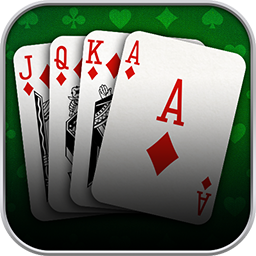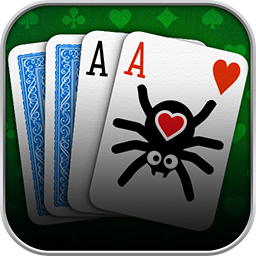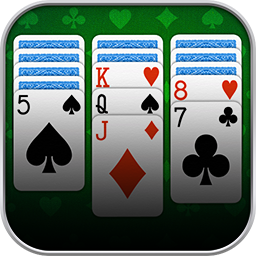The actual Pinochle showdown commences when the cards are falling one by one – in trick-taking! Find out here about the basic variations, differences between three-player Pinochle and four-player Pinochle, as in Cross Pinochle, and which rules apply at any time.
If you are only looking for info on one specific part of trick-taking, you can jump to the matching chapter of this lesson here.
1. When Does it Start?
As you could see in the previous Pinochle Lessons, the game requires tactic playing even before trick-taking – during bidding and melding. Once a person at your table became declarer, determined the trump suit, and everybody melded, the trick-taking begins. In case the declarer forfeits, trick-taking could also be skipped. That is not what this lesson is about, though.
Trick-taking is about winning as many cards as possible with as high values as possible. These values are counted in eyes or pips. You need to win at least one trick to bring your meld points to the scoreboard. As declarer, you additionally have to reach your bid value. In Cross Pinochle, you have additional support from a teammate.
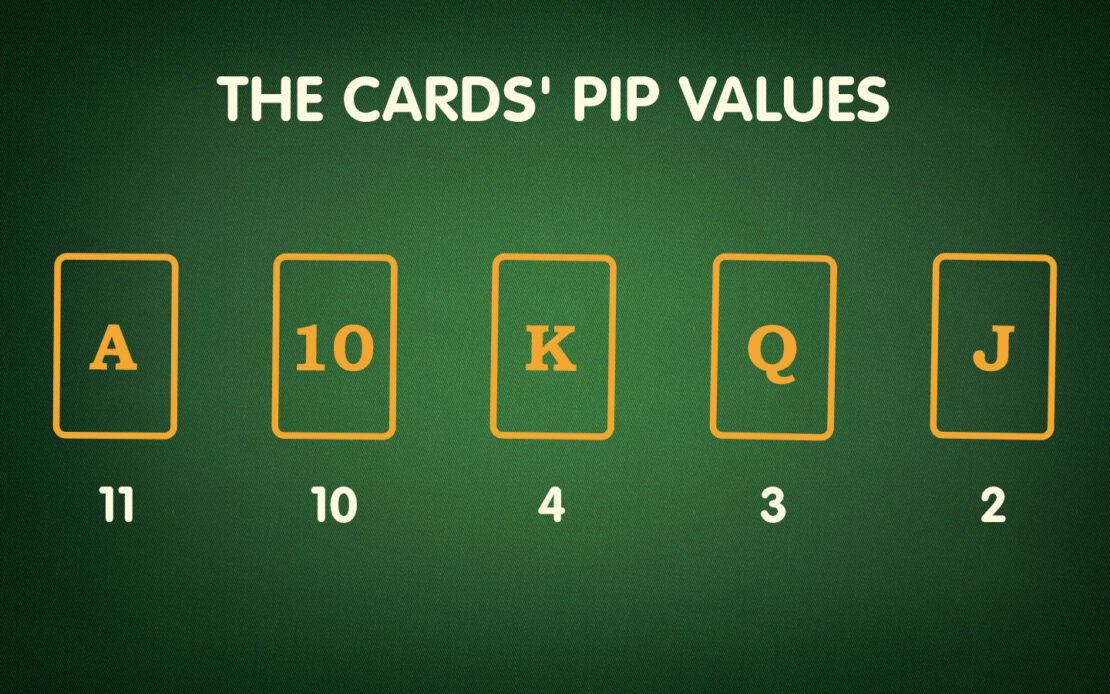
2. That is How it Goes
So, trick-taking begins after melding. The forehand always gets to start. This position is located to the dealer’s right at all times. From here on out, each player gets to play counter-clockwise. Once everybody contributed a card, you check who wins the trick. That person gets to start the next trick, and the rest follows in the usual order. You continue this pattern until you played all hand cards.


When you win a trick, all cards of the trick are placed face-down in front of you. The cards’ pip values are added to your score. If you are the declarer, all players at your table at the Pinochle Palace will see if you reached your bid value yet. Apart from that, everything remains the same as at home: You are free to track your score in your head, but the evaluation comes at the end of the round.
3. Winning a Trick
If you contribute the strongest card to a trick, you win it. That sounds easy enough. The order of ranks starting with the Ace on top and ending with the Jack at the bottom applies here. But Pinochle comes with each rank twice per suit. If the same card appears twice in a trick, the card first played always beats its twin!

Additionally, one suit is always declared trump in the basic game. You can add other popular game modes via custom rules. We are already planning more in-depth lessons on that. With a trump suit being extraordinary, any trump card is stronger than all cards of any other suit. Among the trump cards, the order of ranks explained above still applies.
In addition, three conditions apply in trick-taking, which make the game more challenging but also more exciting. They apply in the following order:
3.1 Suit Compulsion
You must follow a trick’s suit. The suit is determined by the first card of the trick and can be Clubs, Spades, Hearts, or Diamonds.
As long as you have the matching suit in hand, you have to play it. Any deviation would be foul play. Because of that, you cannot select unapplicable hand cards at the Pinochle Palace.
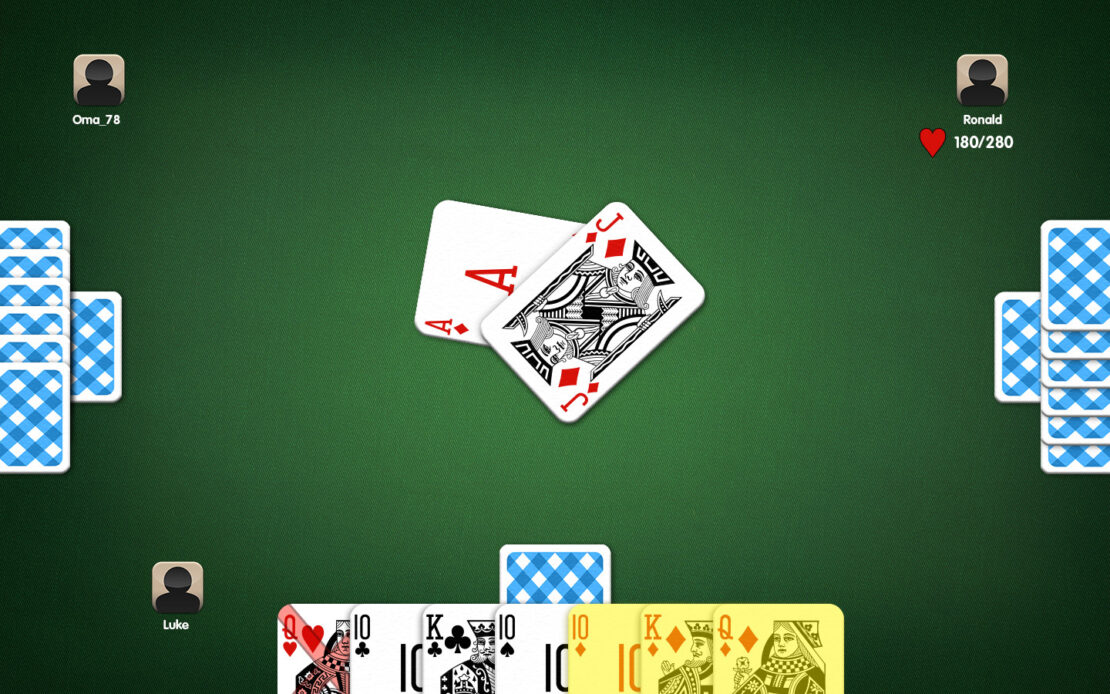
If you do not have the matching suit in your hand, you have to play a different card. There is no passing during trick-taking! With a bit of luck, you have a trump card to win the trick with. But regardless of the card rank, if you can neither follow suit nor play trump, that trick is lost to you.
3.2 Trick Compulsion
If you could take a trick, you have to do so. That applies when you could outdo the cards present in the trick with a card of the same suit but higher rank.
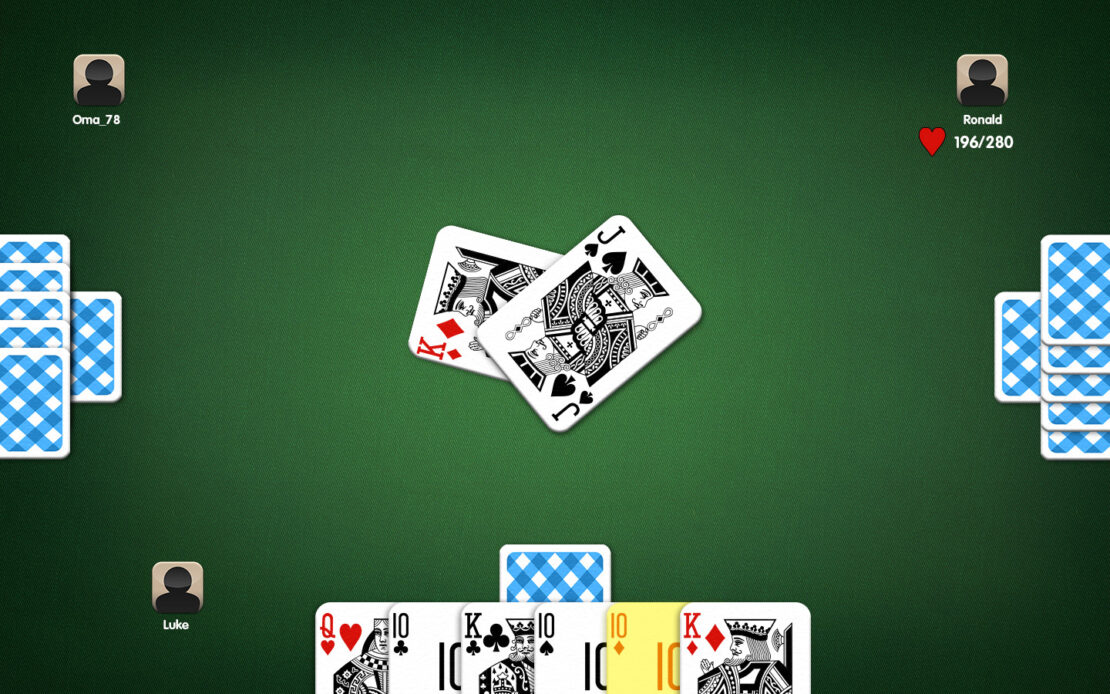
When it comes to non-trump tricks, you might be able to keep your strong cards. If somebody already played a trump card while you are still holding cards of the trick suit, you cannot get that trick, regardless of how high you go in the trick suit. That way, you do not have to give away valuable eyes.
But if you cannot follow suit at all and thus cannot win the trick with a non-trump card, trump compulsion might come into play.
3.3 Trump Compulsion
If you cannot follow suit in a trick, but you are holding a trump card, you have to use that trump card to win the trick.
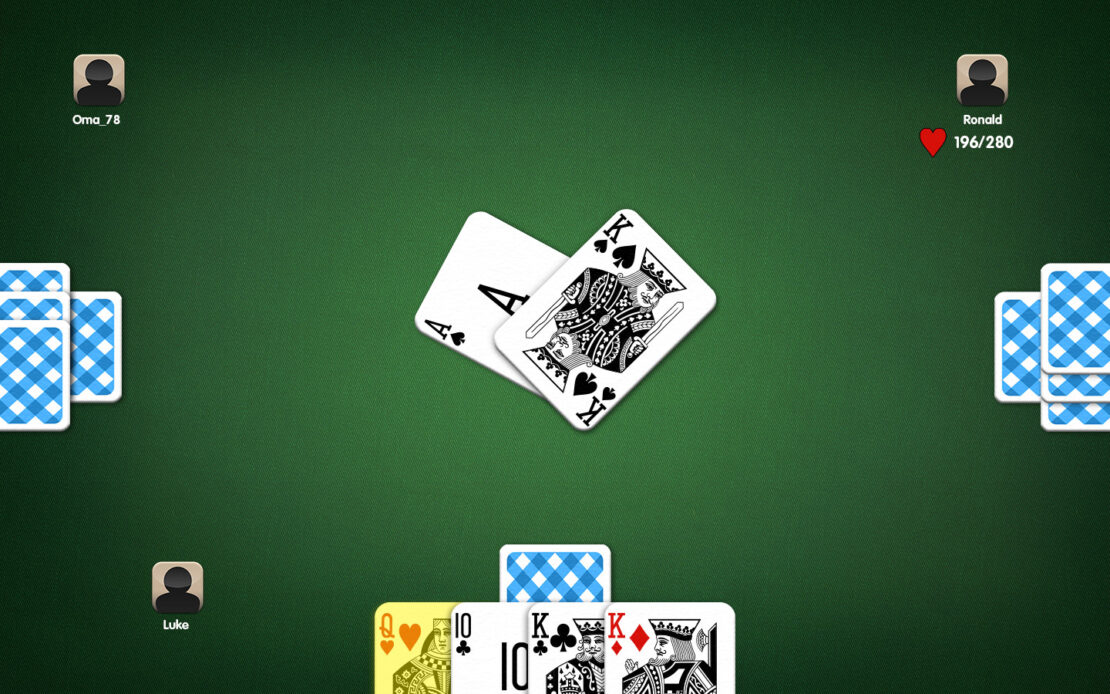
4. Evaluation
In the evaluation, all eyes are on the declarer at first. If that is you, the first order is checking if you got any tricks. If yes, all your meld points are added to your score.
Then, the tricks you won are counted: The pip values of the cards you won are added to your meld score. Then, the pip values from the kitty go on top. If you were able to take the last trick in the round, you would get ten further bonus points! In Cross Pinochle, the meld points and trick points of the whole team are tallied.
The result is always rounded up or down to the next tenner before checking if you reached your bid value. A score of 195 checks out at 200, whereas 184 points check out at 180 points, for example.
4.1 Success
If your final result is at least equal to the bid value, you won the round, and all gained points are noted. Then, the other players are up. They will also only get meld points if they were able to get at least one trick. If that happens, the pip values become points again, and the score is rounded to the next tenner. In Cross Pinochle, this process is summed up per team.
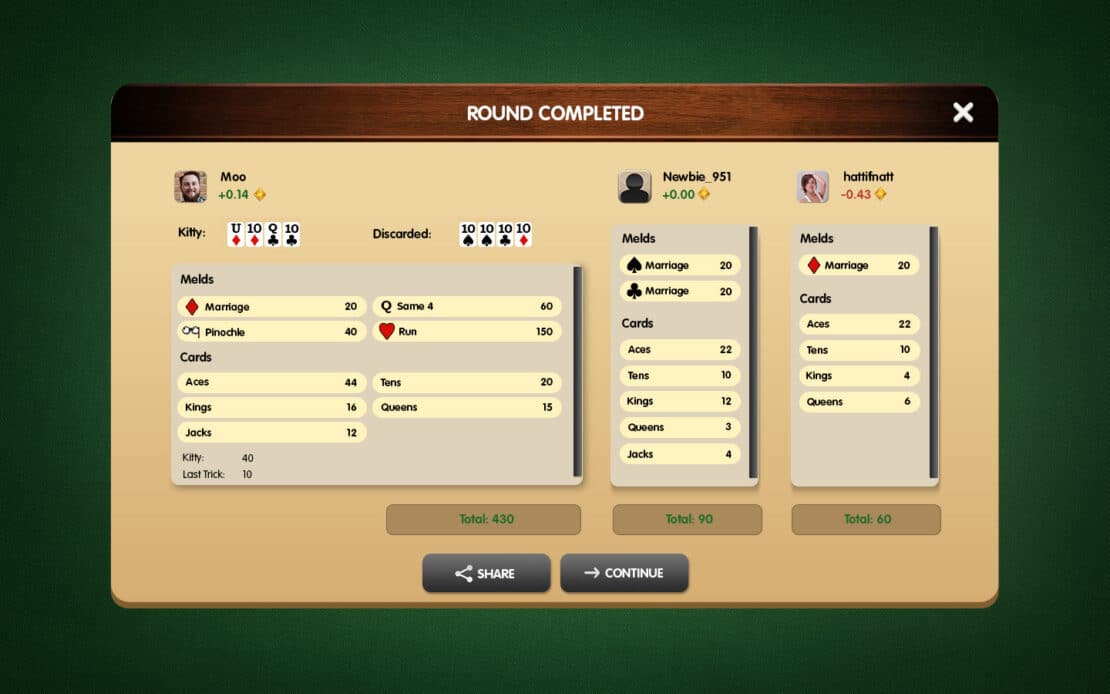

4.2 Defeat
If your final result as declarer comes in below your bid value, you lost the round. Thus, your points from melds and pips from tricks go void. Instead, double your bid value is turned into penalty points. Then, the other players are up. They will, again, only get meld points if they were able to get at least one trick. If that happens, the pip values become points again, and the score is rounded to the next tenner. In Cross Pinochle, this process is summed up per team.

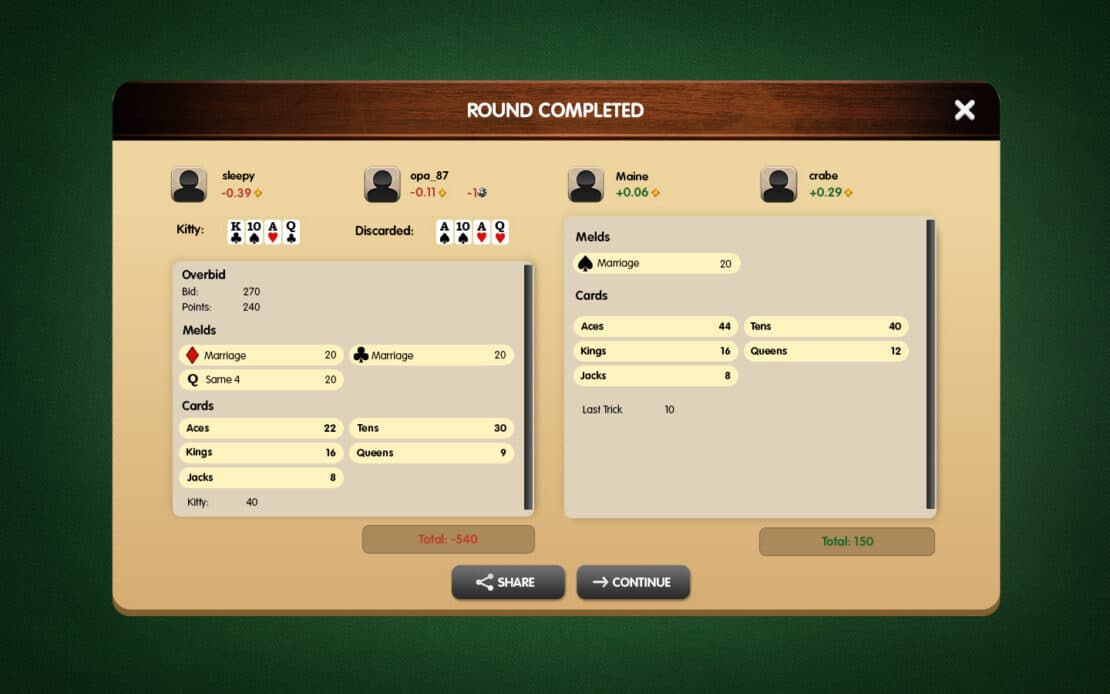
And with that, you finished trick-taking and a round of Pinochle. No need to gather moss! Build on your success or even out the last round.
If you would rather do some more reading, you find everything in one place in our Pinochle School: Glossary, manual, history, and lessons on Pinochle. If you have no more questions, please enjoy your next couple of Pinochle rounds!


